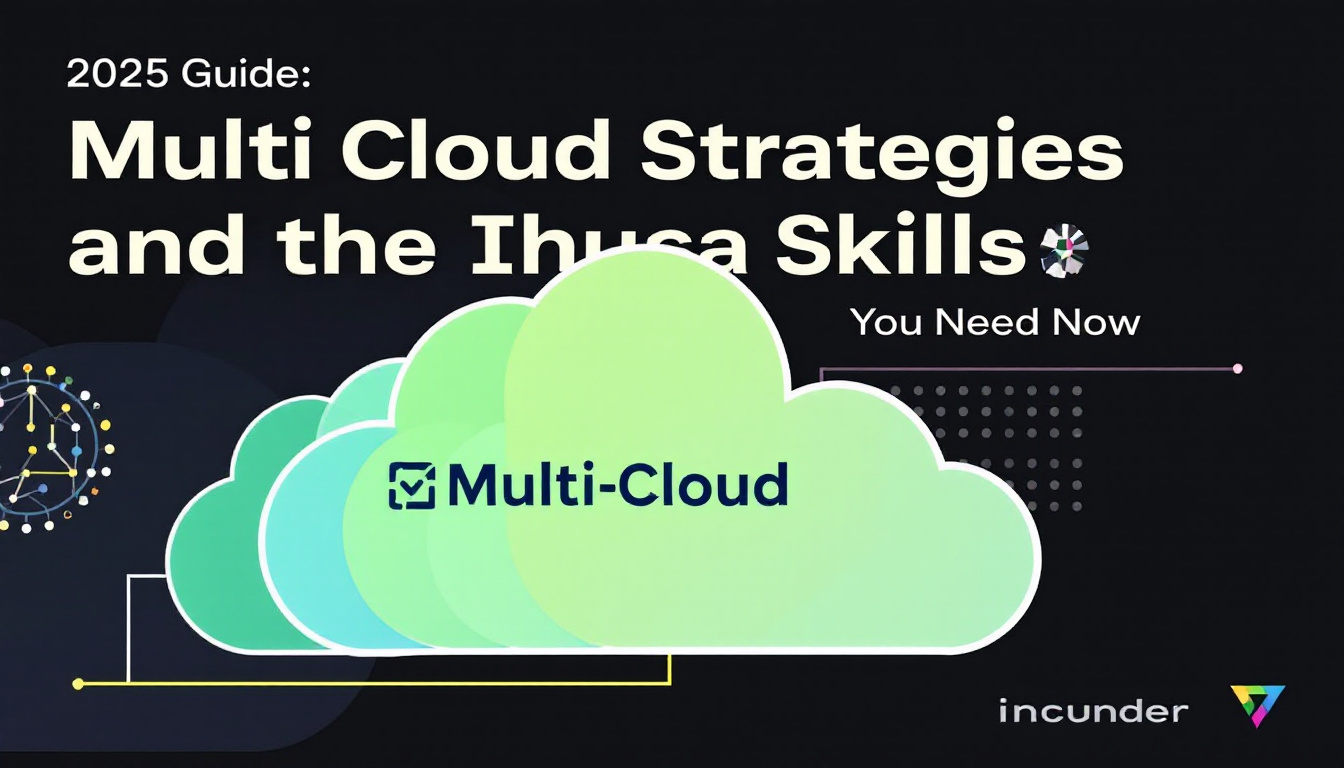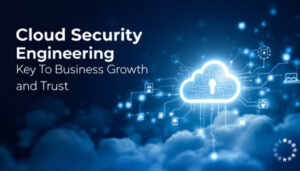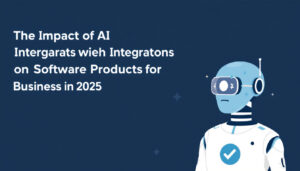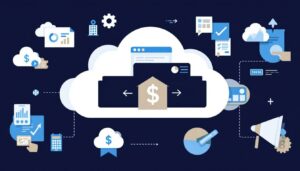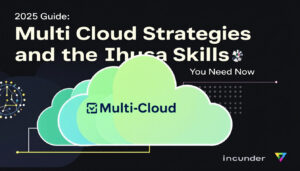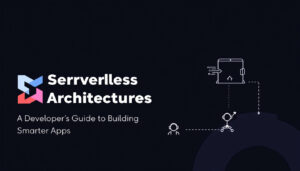Multi-cloud strategies are redefining how organizations approach IT operations and business innovation. As more businesses adopt solutions that involve several cloud providers, the challenges—and expectations—around integration, security, and optimization continue to grow. Professionals in IT, software development, electronics, and business must stay ahead of these developments to remain in demand. “2025 Guide: Multi-Cloud Strategies and the Skills You Need Now”
Mastering the right multi-cloud skills is now essential. Employers seek individuals who can manage complexity, boost productivity, and secure digital assets across varied platforms. This article outlines the core skills shaping employer hiring, with examples that connect to real-world outcomes. If you want deeper insight into current trends influencing technology roles, key trends in digital products for developers offers additional context.
Understanding Multi-Cloud Strategies: Why They Matter in 2025
Multi-cloud strategies refer to using multiple cloud services from different providers to meet specific business and technical goals. By 2025, this approach is becoming standard across industries—from enterprise IT to electronics and software development. Factors driving adoption include the need for agile innovation, stronger risk management, and smarter cost controls. Major trends, such as AI-driven cloud services and cross-cloud integration, are guiding how organizations approach their cloud environments. This section outlines key benefits, challenges, and the essential role of automation in modern multi-cloud operations.
Benefits of a Multi-Cloud Approach
 Photo by panumas nikhomkhai
Photo by panumas nikhomkhai
Organizations choose a multi-cloud strategy for its adaptability and risk reduction. Adopting several cloud providers means teams can select the best services for each workload instead of relying on a single vendor. This flexibility delivers several key benefits:
- Business agility: Organizations deploy new features, scale resources, or enter new markets more quickly without vendor constraints.
- Risk mitigation: Spreading workloads across providers limits the impact of outages and security incidents.
- Cost optimization: Teams compare services and pricing, matching workloads to cost-effective solutions and avoiding vendor lock-in.
- Regulatory compliance: Data and workloads can be placed in specific regions, meeting legal or industry requirements more effectively.
- Innovation speed: Access to different features and technologies across platforms helps teams test and implement new ideas faster.
Emerging reports suggest multi-cloud adoption will continue climbing, with multi-cloud and hybrid cloud strategies ranked among top trends for 2025.
Challenges Facing Multi-Cloud Adoption
While multi-cloud strategies unlock benefits, they also introduce complexity:
- Integration: Connecting applications, data, and APIs across platforms is challenging and can introduce compatibility issues.
- Security: Each additional provider adds potential risks and requires consistent policies to protect data and privacy. For deeper insights, review cloud-based digital product security in 2025.
- Visibility and control: Tracking costs, usage, and performance across platforms requires advanced monitoring and management tools.
- Resource skills gap: Finding professionals skilled in diverse cloud technologies remains a challenge for employers.
- Governance: Ensuring compliance, policy enforcement, and change tracking gets harder as environments become more complex.
Many organizations are addressing these issues by reviewing their architecture and building robust frameworks to standardize operations across clouds, as highlighted by recent cloud computing predictions for 2025.
Role of Automation in Multi-Cloud Environments
Automation is becoming a foundation for running efficient multi-cloud environments in 2025. By automating provisioning, monitoring, and optimization tasks, organizations reduce errors and free up staff for higher-value activities.
Key ways automation streamlines operations include:
- Provisioning resources: Automated scripts can spin up and down compute, storage, or networking resources on demand in any cloud.
- Monitoring and alerts: Automated tools gather performance and security data, triggering alerts or corrective actions when issues arise.
- Policy enforcement: Automation ensures compliance rules and security policies are consistently applied across platforms.
- Cost management: Automated tagging and reporting help teams identify unused or underused resources and act to optimize spending.
For organizations aiming to maximize productivity, building workflows around automation is no longer optional. Advanced cloud automation strategies for 2025 have shown measurable improvements in efficiency, reduction of manual labor, and better control over complex environments.
Automation helps organizations keep up with the scale and pace of multi-cloud operations, ensuring consistency across cloud services and maintaining competitive advantage.
Must-Have Skills for Mastering Multi-Cloud Strategies in Today’s Job Market
Today’s job market places a high value on those with the ability to manage complex, multi-cloud environments. Employers expect candidates to possess a blend of technical expertise, strategic thinking, and communication skills. Mastering these areas provides a distinct advantage for IT professionals, developers, electronics engineers, and business leaders who must balance operational demands with organizational goals.
Cross-Platform Cloud Architecture and Integration
 Photo by Christina Morillo
Photo by Christina Morillo
A strong understanding of architecture across multiple cloud platforms is foundational. Professionals must design systems that work seamlessly between providers such as AWS, Google Cloud, and Microsoft Azure. Integration capabilities matter; this means knowing APIs, cloud-native services, and hybrid connectivity solutions.
Key skills to highlight include:
- Designing interoperable solutions across multiple clouds.
- Handling identity and access management consistently across platforms.
- Coordinating data synchronization and migration processes.
- Knowledge of cross-cloud networking and secure connectivity.
Teams rely on specialists who can choose the best tool for each task and respond to rapid platform updates. This flexibility ensures smooth operations as systems evolve.
Security and Compliance in a Multi-Cloud World
Security standards shift with each provider. Professionals must standardize safeguards to manage risk. Employers favor candidates with up-to-date cloud security practices and the ability to interpret varying compliance frameworks.
Essential areas to master:
- Implementing encryption, identity, and access management consistently.
- Addressing regulatory and industry compliance across cloud vendors.
- Continuous risk assessment and policy enforcement.
The growing importance of securing cloud-based digital products demands a comprehensive approach. For current best practices, see Cloud-based digital products security, which covers core strategies for maintaining robust defenses in complex environments.
Automation, Scripting, and Infrastructure as Code (IaC)
Multi-cloud environments operate at speed and scale. Manual processes often fall short, leaving gaps in efficiency and accuracy. Competence in automation and scripting has become a baseline requirement.
Key automation and coding skills include:
- Scripting with tools such as Python, Bash, or PowerShell for fast deployment.
- Developing Infrastructure as Code (IaC) using Terraform, AWS CloudFormation, or Azure Resource Manager.
- Creating self-healing solutions that automatically resolve failures.
These abilities not only save time but also minimize mistakes. Employers will continue to prefer candidates who can standardize, automate, and document consistent deployments. The importance of these skills is further underscored by their impact on both reliability and business outcomes, as discussed in the Top Programming Languages in 2025 article.
Monitoring, Analytics, and Cost Optimization
Operating across clouds introduces unique challenges in visibility and spending. Professionals must use advanced monitoring and analytics to maintain control over performance, availability, and budgets.
Core skills in this area:
- Proficiency in cross-platform monitoring tools (such as Datadog, Prometheus, or native services).
- Knowledge of cost analysis and billing systems for each provider.
- Experience with automated reporting and resource optimization.
Employers want candidates who do not just manage infrastructure, but actively identify inefficiencies and recommend actionable changes. According to a recent overview of the top skills needed to manage multi-cloud environments, the ability to track usage, flag anomalies, and optimize costs remains a priority.
Business Acumen and Communication Skills
Technical skills alone rarely achieve business success. Multi-cloud roles now call for professionals who understand broader organizational objectives and can communicate value to both technical and non-technical audiences.
Attributes that employers seek:
- Translating complex cloud concepts into clear business value.
- Leading cross-functional teams and collaborating with stakeholders.
- Balancing IT innovation with compliance, financial, and operational requirements.
Individuals who combine technical depth with business insight serve as essential bridges within companies. Multi-cloud fluency not only improves problem-solving but also elevates decision-making, as highlighted in resources covering the career benefits of multicloud fluency.
A mature multi-cloud team needs strong communicators who can drive collaboration across IT, security, finance, and business units, ensuring alignment and sustainable value.
Developing and Validating Multi-Cloud Expertise
Mastery of multi-cloud strategies is measured not just by knowledge, but by recognized proof of capability. Employers prioritize professionals who show independent validation through formal certifications, targeted learning, and practical demonstration. In this section, we detail the most effective pathways to develop and validate your expertise in the multi-cloud space.
Industry-Recognized Certifications and Training

Photo by RDNE Stock project
Industry certifications signal to employers that you possess the technical ability and strategic understanding to operate across multiple cloud environments. The leading providers offer certifications that cater to both broad and specialized skill areas.
Commonly sought-after certifications in 2025 include:
- AWS Certified Solutions Architect – Professional: Validates advanced technical skills in AWS design and deployment.
- Google Professional Cloud Architect: Confirms the ability to design, develop, and manage secure, scalable solutions on Google Cloud.
- Microsoft Certified: Azure Solutions Architect Expert: Focuses on designing cloud and hybrid solutions tailored for Microsoft Azure.
- Certified Kubernetes Administrator (CKA): Highlights skills in container orchestration, which is critical in multi-cloud clusters.
- CompTIA Cloud+: Covers foundational multi-cloud management concepts relevant for IT practitioners managing hybrid and multi-cloud infrastructures.
These certifications provide a unified language and benchmarking tool for employers and professionals. They are routinely updated to reflect new services and technologies, maintaining their value for both new entrants and experienced staff. In selecting certifications, candidates should match their learning path to organizational requirements and targeted roles.
Supplementing these credentials with ongoing training, such as vendor-specific workshops and scenario-driven labs, ensures knowledge remains fresh and directly applicable to emerging technologies.
Niche Learning Opportunities and Upskilling Resources
Advancing beyond standard certifications, niche learning channels offer a depth of expertise critical for specialized roles in security, automation, or integration. Focused upskilling can set you apart, especially as organizations seek talent to solve challenges that span multiple clouds and regulatory frameworks.
Tailored resources include:
- Vendor-specific bootcamps: Offered by leading providers for newly released technologies or workflows.
- Hands-on labs and simulators: Enable practice in real or simulated environments, reinforcing conceptual knowledge with practical experience.
- Professional association workshops: Provide networking, continuing education credits, and expert-led sessions on advanced cloud challenges.
Accessing curated lists such as the Best Niche Cybersecurity Training Guide 2025 is recommended for those targeting security and compliance roles in multi-cloud operations. This internal resource details top-rated courses and hands-on programs that directly align with the evolving expectations of IT, business, and development professionals.
Participating in these niche programs enhances practical knowledge, accelerates readiness for new challenges, and builds confidence in solving difficult cloud-specific issues.
Building Portfolio Projects and Real-World Scenarios
While certifications validate core knowledge, portfolio projects and hands-on scenarios prove real-world ability. Employers judge not only theoretical understanding but also your approach to applying skills in authentic settings.
Effective methods for demonstrating expertise include:
- Developing multi-cloud deployment templates: Use open-source tools like Terraform to provision resources across AWS, Azure, and Google Cloud.
- Simulating hybrid and failover scenarios: Design architectures that test workload migration, backup, and disaster recovery across providers.
- Contributing to open-source cloud automation projects: Participation showcases collaboration skills and technical acumen.
- Documenting use cases and project outcomes: Maintain a public repository or case study log to highlight specific challenges solved and the impact of your solutions.
Many professionals host code and workflows on platforms such as GitHub, linking them on résumés or professional profiles. Portfolios displaying a blend of environments, advanced automations, and demonstrable security practices make candidates more attractive in a competitive market.
Consistent engagement with real-world scenarios both validates and deepens expertise, proving readiness for the complex requirements of multi-cloud architecture, governance, and operations. For further guidance on digital product demands and project ideas, review Digital Products for Software Developers 2025, which offers practical frameworks for technical growth.
Trends and Future Directions for Multi-Cloud Professionals
The multi-cloud environment is growing more sophisticated as organizations seek to optimize performance, increase flexibility, and improve resilience. Professionals must continue to adapt as new technologies and practices alter the expectations for skills and leadership across IT, development, electronics, and business roles. Staying current requires understanding how automation, security, and development practices are shifting.
AI and Automation in Multi-Cloud Management
 Photo by ThisIsEngineering
Photo by ThisIsEngineering
Artificial intelligence and automation are quickly transforming how enterprises run and optimize multi-cloud systems. Companies use AI tools to analyze vast datasets from multiple sources, which supports faster decision-making and efficient infrastructure management. Automation solutions now handle scaling, incident response, configuration, and even predictive maintenance without direct human oversight.
Key developments professionals should note:
- AI-powered monitoring: Use of machine learning models to detect anomalies and prevent downtime.
- Predictive analytics: Tools forecast resource demands and optimize workloads in real time.
- Automated compliance checks: Systems that assess policies across providers help maintain governance and reduce workloads.
Organizations have already seen measurable efficiency gains and cost savings. Reports show that these capabilities are driving significant changes, as outlined in the analysis, How Cloud And AI Can Reshape Enterprise Innovation In 2025 and Beyond.
For practical guidance on integrating automation, professionals can review cloud automation strategies to boost productivity in 2025.
The Rise of Cloud-Native and Serverless
Cloud-native and serverless models continue to gain popularity, accelerating software delivery and improving scalability. Developers build and run applications using microservices, containers, and APIs that take full advantage of multi-cloud resources. The serverless model abstracts infrastructure management, allowing teams to focus on core logic while cloud providers manage provisioning and scaling.
Current trends in cloud-native adoption include:
- Widespread use of containers and orchestration tools, such as Kubernetes, for deploying scalable and portable applications.
- Serverless functions: Rapid development and deployment cycles, reduced operational overhead, and improved cost efficiency.
- Cross-cloud compatibility: Tools that support deployment across multiple platforms simplify migration and disaster recovery.
A detailed analysis of these trends is available in the State of Cloud Native Development Q1 2025, which explores how organizations are adopting modern practices to meet evolving business needs. Those interested in building advanced skills in this field will benefit from a strong understanding of DevOps automation best practices for 2025, as automation and cloud-native operations are increasingly linked.
Evolving Security Needs and Advanced Practices
Security remains a top concern as organizations operate across multiple providers and regions. Modern threats—ransomware, insider risks, or supply chain attacks—underscore the need for multi-layered defenses. Effective multi-cloud security requires a coordinated approach, blending native tools, third-party platforms, and a Zero Trust mindset.
Notable security trends for 2025:
- Unified backup and recovery: Reducing fragmentation and ensuring data consistency across diverse environments.
- Zero Trust security: Enforcing policies that require continuous verification for users, devices, and applications.
- Automated risk detection: AI-driven solutions that track suspicious patterns, prevent breaches, and simplify compliance.
For more on how these tactics support multi-layered defenses, see the review of Google Cloud Security 2025: Multi-Layered Hybrid Protection. In-depth guidance for tackling security challenges in digital products is also available in cloud-based digital products security considerations for 2025.
Key Digital Trends Impacting Cloud Careers: Encourage Further Reading
Technology professionals who follow the latest digital product and cloud trends will shape future roles and opportunities. The pace of change demands ongoing learning and skills development, especially as businesses seek to innovate and stay competitive. Those who monitor advancements in automation, AI, developer tools, and new business models will be equipped to contribute effectively.
Explore broad digital innovations and how they impact IT, engineering, and business roles in Key digital product trends for IT professionals and developers in 2025.
For actionable ideas on both products and skills, resources such as the most profitable digital products to sell in 2025 expand on new revenue streams and technology-driven opportunities.
A future-focused mindset keeps careers adaptable and relevant against ongoing technology evolution. Staying aware of these trends will prepare multi-cloud professionals for emerging tasks and leadership opportunities.
Conclusion
Mastering multi-cloud strategies is now a baseline expectation for professionals in IT, development, electronics, and business as organizations focus on resilience and growth. Those who build practical skills in architecture, automation, and security create measurable business value and stand out in a complex market. Employers look for professionals who can drive operational efficiency, manage costs, and maintain compliance across cloud platforms.
Ongoing upskilling, industry certifications, and real project experience set professionals apart. To accelerate your development, explore advanced workflow ideas covered in Future-proofing home electronics.
Prioritize learning and apply new expertise in your daily work to remain prepared for future shifts. Thank you for reading—share your thoughts or success stories to contribute further to this field.

